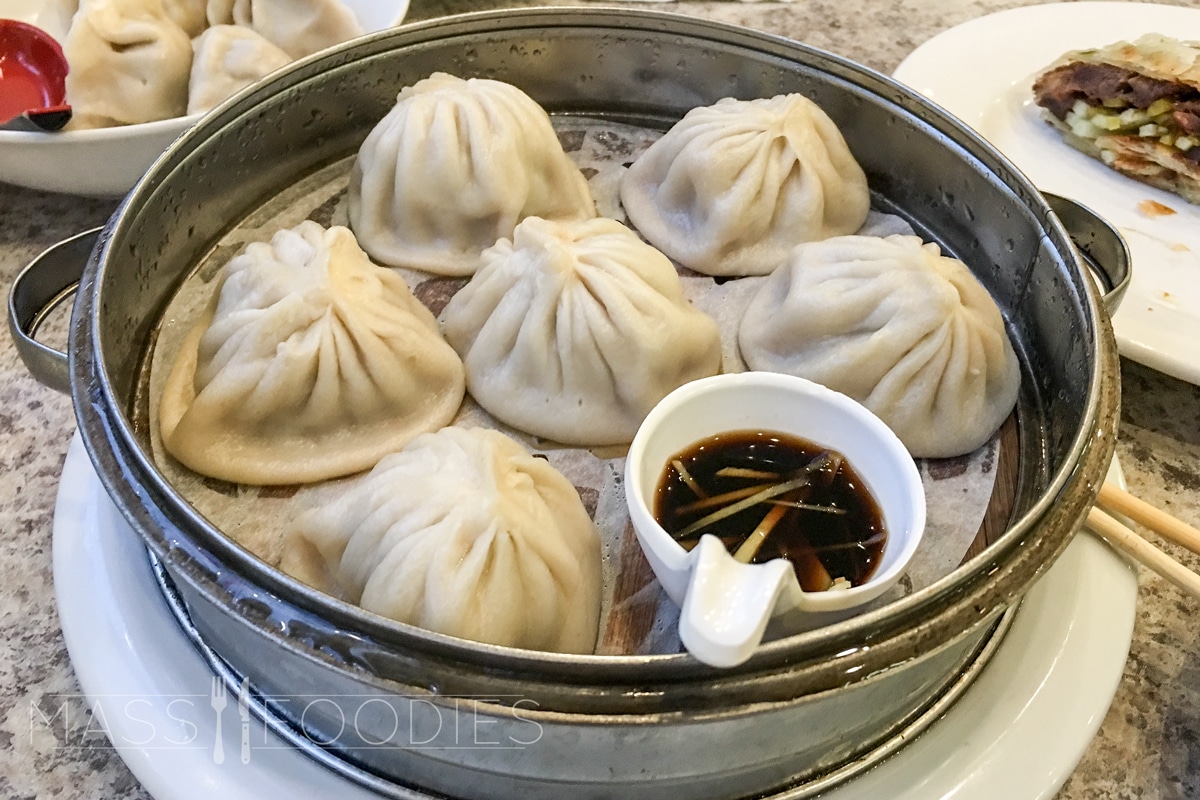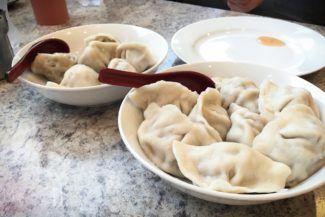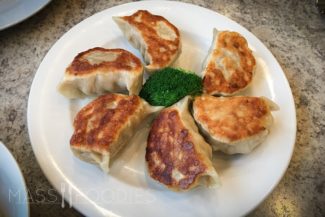
It’s a strange expression to say, “eat your soup.” It is an admission that soup is a food meant to be eaten and not a liquid meant to be drunk; it elevates soup itself. To further complicate things, some languages only use the verb “to eat” for anything that goes in one’s mouth. Soup, soda, and even cigarettes are “eaten.”
Doing little to clarify the situation, let us now consider the traditional soup dumpling or xiao long bao as well as the geographically fluid word, “dumpling.” This is not matzo/matzah, nor is it traditional Southern American “chicken and dumplings.” This is more like a wanton with its top pinched in a circle so that the dumpling is perfectly round. The dough is wrapped around a ball of spiced and ground pork and then steamed. During the cooking process the gelatin in the pork liquefies and fills the dumpling with what is essentially soup. There is even one variant, Tang bao, which is a dumpling from the Jiangnan region of China that is sometimes so large, a single serving would fill a catcher’s mitt and the broth is drunk through a straw. Its literal translation is, “soup buns.”

I went in search for soup dumplings in or around Worcester, disappointed to find that there are not many places that serve them. Finally, at 56 Canal Street in Millbury, I found Star Dumpling, which shares its parking lot with a gas station. Do not let the dressed down exterior fool you, these people know dumplings.
The history of the soup dumpling can be traced back to street food in 1875 Nanjing (during the Ming Dynasty for those of you who are counting.) Its origins are semi-apocryphal and sometimes challenged with competing narratives. Most trace the soup dumpling’s genesis to Nanjing, at the Guyi Garden Restaurant where an unknown baker offered soup dumplings as a snack.
The soup dumpling moved to Shanghi amid Chairman Mao Zedong’s Cultural Revolution that banished many traditional Chinese food practices, and accordingly their chefs, to other countries. Similarly, skilled bartenders in America left for Europe or Asia when Prohibition arrived. The story goes on to involve a chef with a gambling habit. But sufficed to say, the soup dumpling was on the move and gaining popularity across China and Japan.
At Star Dumpling, I proceeded to order pretty much every kind of steamed dumpling on the menu. I highly recommend the pan-seared pork and Napa cabbage. I asked if they made soup dumplings and soon a metal steam tray with six perfect dumplings and a soup spoon with vinegar and ginger appeared. They arrived so perfectly formed that they looked like emojis. And, so aptly named is the dumpling. Like, when you meet a woman named Trisha and think to yourself, “yeah…you kind of look like a Trisha.”
Here, you are faced with a basic soup dumpling problem: how does one consume such a thing? Yes, you may try to insert the entire amorphous mass in your mouth and you will be rewarded with an epically burned tongue. Yes, it will be delicious for a moment but as my companion found out, you may not be able to taste anything for the next day or two.

Chopsticks and a soup spoon are key to proper consumption. Step one is placing the dumpling gently on the soup spoon with your chopsticks; one must not pierce the dumpling. Bite a small hole in the side of the dumpling, allowing the soup to drain onto the spoon and cool. One must then sip the soup and finally eat the dumpling itself.
You are rewarded with fragrant, clear broth, and the porky lip-smacking meatball inside. You understand immediately that these are handmade. A traditional soup dumpling has exactly 18 pleats. I didn’t count because I ate them too quickly.
I sat back and wiped the slick of pork broth off my chin and thought about how this perfect food had not changed in almost 150 years and the forces that drove it from a park in Nanjing to this restaurant in Millbury beside a gas station. Yes, every culture has come up with some sort of steamed, fried, or boiled dumpling: the Nepali momo, the Italian ravioli, the Polish pierogi. The soup dumpling should occupy a place in the same pantheon.
